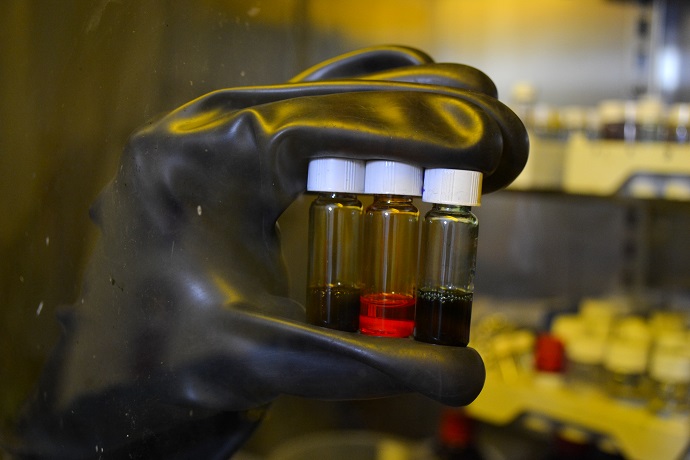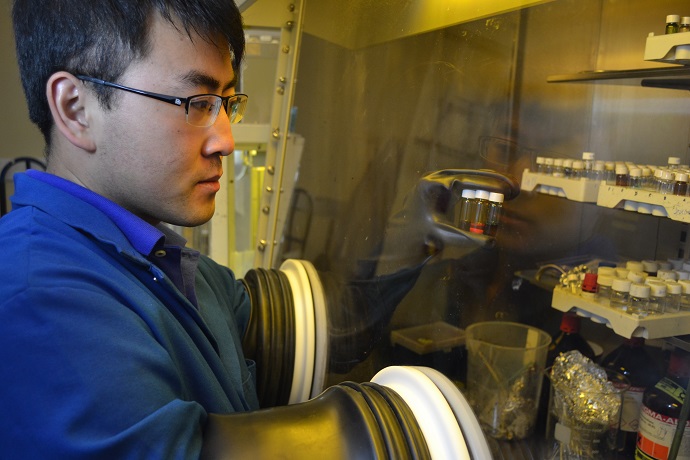February 20, 2015
Bill Kisliuk
Paving the way for lighter and more flexible solar devices, UCLA researchers have identified the key principles for developing high-efficiency polymer solar cells.
Today’s commercially produced solar panels use silicon cells to efficiently convert sunlight to energy. But silicon panels are too heavy to be used for energy-producing coatings for buildings and cars, or flexible and portable power supplies for use in remote areas. Polymer cells are better suited to these potential uses.
Researchers led by Yang Yang, the Carol and Lawrence E. Tannas Jr. Professor of Engineering at the UCLA Henry Samueli School of Engineering and Applied Science, demonstrated improvement in the architecture and performance of polymer cells. The group successfully blended different pairs of polymers — or synthetic plastics — to enable devices to absorb light from a larger part of the solar spectrum. They also identified criteria that could lead to even greater solar cell efficiency and absorption of light as researchers develop new polymers.
The research was published in Nature Photonics.
Solar cells based on different materials or molecular structures show different potential in terms of efficiency, flexibility and cost-effectiveness, according to Yang, the principal investigator on the research and a member of the California NanoSystems Institute.
Silicon cells are the current choice for efficient energy conversion. Perovskite cells, developed over the last few years, show great promise in terms of efficiency, but are still being studied. Polymer cells, which have been studied for many years, have the advantage of being light and inexpensive to manufacture.
“As polymer solar cells become more efficient,” said Yang, “they could have a profound impact on our ability to tap the power of the sun.”
Over the years, researchers have invented polymers with different molecular structures in an effort to create materials that can absorb light from different parts of the solar spectrum. They also have blended two or more polymers together on one device to further improve absorption. However, blending has not yielded great improvement.
In the new study, UCLA researchers demonstrated the problem could be solved by carefully selecting polymers with molecular structures that are compatible with each other. Using different combinations of polymers and device architectures, they determined which blends improved the solar cells’ efficiency and which were incompatible with each other.
Yang “Michael” Yang, no relation to the principal investigator, was the first author of the paper.
“By experimenting with the molecular organization and crystallite size of the polymers, and the architecture of the cell, we found a rule for selecting the proper pair of polymers to enhance efficiency,” he said. “These findings can help chemists design better pairs of polymers and reach even higher efficiency in the future.”

Polymers and polymer blend
Two polymers and a polymer blend used by UCLA researchers to develop more efficient solar cell technology.
UCLA Engineering
The study’s other authors were Gang Li, a staff researcher in UCLA’s materials science and engineering department; Wei Chen, a researcher at Argonne National Laboratory; Brion Bob, Letian Dou and Hsin-Sheng Duan, who were UCLA graduate students when the research was conducted; and Wei-Hsuan Chang, a UCLA graduate student researcher.
The research was funded by the Office of Naval Research and the Department of Energy.















